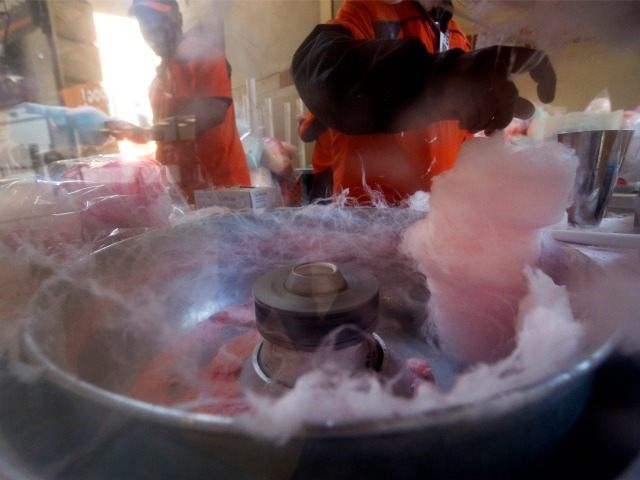NASHVILLE, Feb. 9 (UPI) — The mechanics of a cotton candy machine are proving useful to the quest to build life-sized artificial organs.
Capillaries are the body’s most narrow blood vessels. The thin-walled tubes are essential to organs, delivering oxygen and nutrients and carrying away waste. They also serve is a kind of scaffolding, their woven structure organizing the collection of liver or kidney cells.
Engineers at Vanderbilt University have been experimenting with cotton candy machines as a means to weave capillary-like structures using hydrogels. Unlike solid polymers, water-based gels allow vital fluids to flow through the structure more easily, mimicking the role of the tiny vessels.
It’s possible to build capillary scaffolding from the bottom up by culturing cells in a thin film of gel and allowing vessels to began forming on their own, but the process is slow and delicate.
Spinning hydrogel channels from a cotton candy machine — the top-down approach — is much faster.
“So far the other top-down approaches have only managed to create networks with microchannels larger than 100 microns, about ten times the size of capillaries,” Leon Bellan, an assistant professor of mechanical engineering at Vanderbilt, said in a press release. “In addition, many of these other techniques are not able to form networks as complex as the cotton candy approach.”
While the cotton candy machine’s mechanics for spinning capillary-like fiber networks proved ideal, finding the right material wasn’t as easy. The scaffolding material has to be both water soluble and insoluble.
“First, the material has to be insoluble in water when you make the mold so it doesn’t dissolve when you pour the gel,” Bellan said. “Then it must dissolve in water to create the microchannels because cells will only grow in aqueous environments.”
That’s where PNIPAM, Poly (N-isopropylacrylamide) come in. It’s a polymer that’s insoluble above 32 degrees Celsius and soluble below 32 degrees.
Researchers build their artificial organ by spinning out a network of PNIPAM threads at warmer temperature. They then pour on a hydogel embedded with cells. The gelatinous mass is cooled, which causes the threads to dissolve, leaving behind a system of microchannels into which live cell cultures are pumped.
“Our experiments show that, after seven days, 90 percent of the cells in a scaffold with perfused microchannels remained alive and functional compared to only 60 to 70 percent in scaffolds that were not perfused or did not have microchannels,” Bellan said.
The initial successes of Bellan and his colleagues are detailed in new paper published in the journal Advanced Healthcare Materials.
Next, Bellan and his research partners will work to fine-tune the process and match the cell types and structure of specific organs.

COMMENTS
Please let us know if you're having issues with commenting.